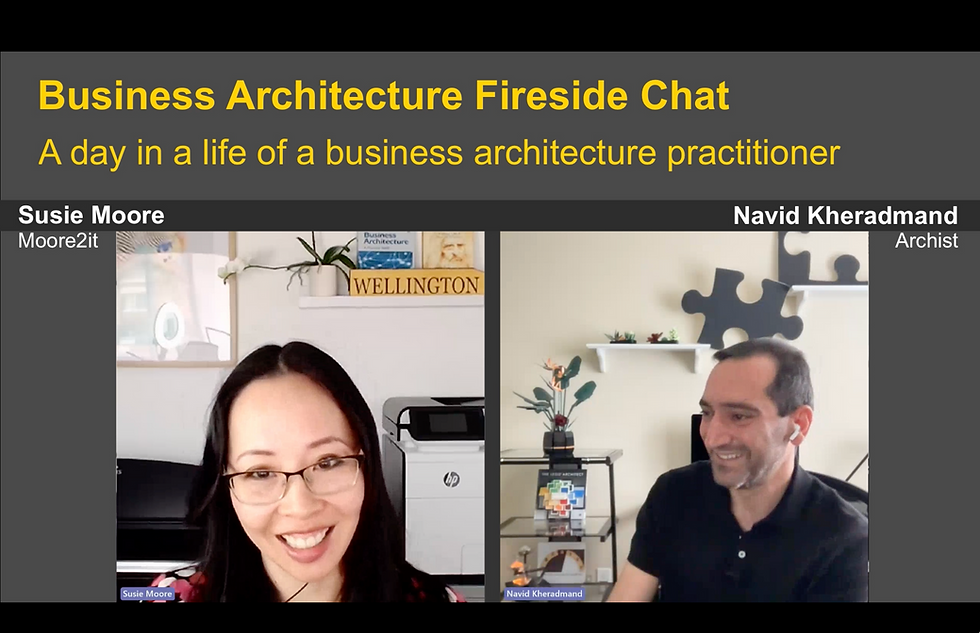Maximizing the Value of Business Transformations through Value Streams
- Navid Kheradmand

- Jun 25, 2022
- 4 min read

Business transformations are referred to as "radical" changes in an organization's business model in response to changing needs and expectations of the market and stakeholders. Transformations are mostly being considered as enhancements in or automation of business capabilities or introduction of new capabilities. However, at the heart of any transformation is the "change" in a way an organization generates and delivers "value" to its stakeholders, both internal and external.
This change then most likely requires enhancement, automation, or introduction of new capabilities in order to enable the envisioned transformation and ultimately the new business model.
In recent years, business capabilities have taken a lot of attention across industries and organizations, both public and private. This is due to the fact that business capabilities bring an unprecedented horizontal view of an organization to the table. This cross-lines-of-business view of “what” an organization does is a powerful tool to ensure alignment and a common understanding across an organization from strategic and operational planning to execution and continuous/incremental performance improvement.
The power of business capabilities is in their relatively stable view of the organization, as they simply describe “what” an organization does regardless of who and how. However, this stable view characteristic also limits the business capabilities in providing a complete picture and understanding of the “unstable” aspects of the business, which are introduced or imposed by transformations.
Organizations in similar industries most probably have also very similar business capabilities, but yet their products and services are viewed differently in the eyes of customers. The reason behind this is the way these organizations utilize their business capabilities to produce and deliver products and services to their customers. In other words, the distinction is not necessarily in the business capabilities themselves but it is in the way organizations "orchestrate" these capabilities.
In order to deliver value to their stakeholders, organizations orchestrate their business capabilities through a sequence of value-add activities collectively referred to as business architecture value streams.[1]
Think of a simplified example of a call centre that has two core business capabilities, namely Customer Validation and Customer Assistance (Inquiry Management). In one scenario, when customer make a call, they are put in the queue until the call is answered by a call centre agent, triggering Customer Assistance (Inquiry Management) capability. The agent then triggers Customer Validation capability by asking customer’s first and last names and a series of questions and confirming this information with the system to validate the customer’s identity. These all happen before starting to resolve the customer’s issue! The figure below illustrates this scenario.

Now consider a second scenario: when the customer makes a call, the system automatically triggers Customer Validation capability first and confirms the customer’s identity and once the identity is validated then the customer is put in the queue until the Customer Assistance (Inquiry Management) capability is triggered and the call is answered by an agent, who can now greet the customer by his or her first name and right away start resolving the customer’s issue. The figure below illustrates this scenario.

Notice that the underlying capabilities in both scenarios are identical. Obviously, in order to enable the second scenario, the Customer Validation capability needs to be automated. However, as long as the order of the value stream activities (stages) are the same as in scenario one, the automation of the Customer Validation capability will add very little value. The true transformation here is in switching the order of the value stream stages, which is turn, “re-orchestrates” the underlying business capabilities.
The ultimate goal of this transformation is not about a business capability automation but it is about creating a completely different and superior customer journey experience and this is enabled by redesigning a value stream.
In addition, notice that the “Resolve Customer Issue” value stream is designed regardless of the line of business or the type of product/service that the customer is calling about. That is one major distinction between business architecture value steams and business processes. Same as business capabilities, value streams also provide a horizontal view across an organization and hence are powerful tools to identify organization-wide opportunities to streamline, improve, reengineer, eliminate, or merge business processes, which are integral parts of any transformation.
Furthermore, note the more efficient and smooth service delivery in the second scenario due to elimination of extra steps to validate the customer’s identity by the agent. This will also makes the call centre agents more efficient and brings more satisfaction to their work, enhancing employee experience, which is considered one of the drivers for enhanced customer experience.
As a result, in order to maximize the business value of transformations, organizations need to look beyond their business capabilities and processes and into their value streams. Automation, enhancement, or introduction of business capabilities is just a means to an end, that is product/service excellence. Organizations achieve this operational and product/service excellence by re-architecting their value streams and the way these value streams orchestrate business capabilities.
[1] Business architecture value stream is defined as “an end-to-end collection of activities that create a result for a customer [stakeholder], who may be the ultimate customer [stakeholder] or an internal end-user of the value stream.” (A Guide to the Business Architecture Body of Knowledge®, BIZBOK® Guide).



